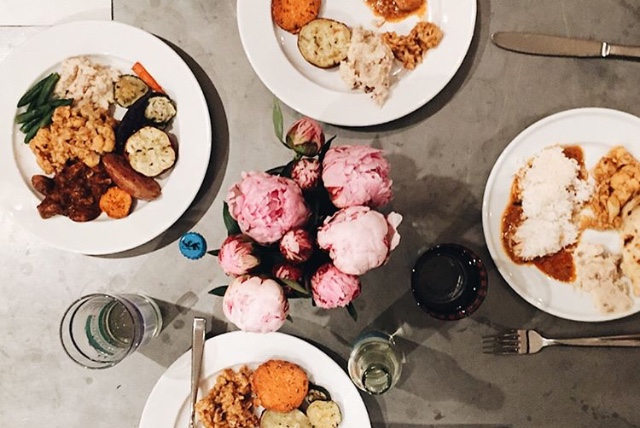We share Thanksgiving with family and friends, commemorating the holiday with parades and feasts of delicious food. While we enjoy these traditions annually, we hardly think about the history behind the celebration. Some scholars are uncertain as to whether the feast at Plymouth really constituted the first Thanksgiving. Historians have recorded similar ceremonies among European settlers in North America which predate the Pilgrims’ celebration.
Many people imagine that Thanksgiving originated with the Mayflower crossing the Massachusetts Bay, where the “Pilgrims” established a village at Plymouth. They did not refer to themselves as Pilgrims; rather, they called themselves “Saints”. Early Americans applied the term “Pilgrims” to all of the early colonists; until the 20th century, it was not used solely to describe those who landed on Plymouth Rock, where there is no actual rock.
In November of 1621, after the Pilgrims’ first corn harvest proved successful, Governor William Bradford organized a celebratory feast and may have invited a group of Native Americans who were “allies” of the fledgling colonies. Although the Pilgrims are thought to have been happily feasting away, they were in fact celebrating a successful harvest by shooting guns and cannons into the air. The Wampanoag chief and 90 warriors made their way to the settlement in full warrior regalia in response to the gunfire. Scholars still question whether the Native Americans were invited or crashed the party.
Many have heard the story of the friendly Native American Squanto who learned English from fishermen and later taught the Pilgrims how to plant corn and other vegetables. Most history books do not inform us that Squanto was kidnapped as a boy and sold into slavery in Spain. After several years, Squanto struggled to get back to Cape Cod, from where he was kidnapped. Upon returning, he discovered he was the only remaining member of his tribe; the rest were either killed in battle or died of disease. It is often believed that Squanto learned English solely to help the colonists, but it was a necessity to facilitate his escape in order to return home.
Some Americans take issue with the way the Thanksgiving story is presented to the public, and especially to schoolchildren. In their view, the traditional narrative paints a deceptively sunny portrait of relations between the Pilgrims and the Wampanoag people, masking a long and bloody conflict that resulted in the deaths of millions. President Abraham Lincoln himself referenced the fantasy of the Pilgrims and ‘Indians’ eating happily together to bring about American unity during the Civil War.
In many contemporary American households, Thanksgiving has lost much of its original religious significance. It is now centered on cooking and sharing a bountiful meal with loved ones. Turkey, which is a Thanksgiving staple that has become ubiquitous in the celebrating of the holiday, may not have been what the Pilgrims actually ate in 1621. Sweet potatoes were not yet grown in North America and cranberries were not likely eaten for dessert because sugar was an unaffordable luxury.
In society today, Thanksgiving is certainly a day to express gratitude. Annie Probert, a junior at RHS, spends Thanksgiving reflecting on the things for which she is thankful. “I’m grateful for my family, friends, and teachers for the nurturing environment they’ve provided me with,” says Probert. Despite the myths and controversies regarding the true origin of the holiday, Thanksgiving is a day filled with cheer, delicious food, and acknowledgment of all that we appreciate.
Danielle Poole
staff writer
Graphic: Amelia Chen

